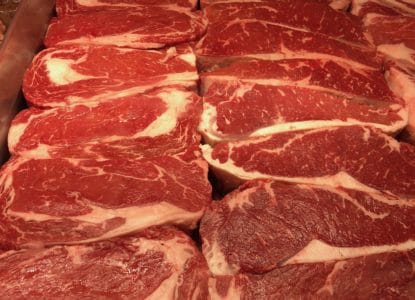OMAD Diets: Is Eating One Meal a Day Healthy?

Contents
As fasting gains popularity as a health and wellness tool, the nutrition world has seen an explosion of different protocols. One of them is called the “one meal a day,” or OMAD diet.
At its core, the OMAD diet is an extreme form of intermittent fasting.
What is intermittent fasting
Intermittent fasting is simply a pattern of abstaining from food for a period of time, followed by a period of eating.
There are several different versions of intermittent fasting. Some common forms of intermittent fasting include:
- 5:2 method: eating normally for 5 days and restricting to around 500 calories for 2 days.
- 16:8 method: 16 hour fast followed by 8 hour eating window.
- Alternate Day Fasting: eat normal for one day followed by a complete 24 hour fast.
- Eat Stop Eat method: 24 hour fast 1-2 days per week.
The most common is the 16:8 method which is a 16 hour overnight fast followed by an 8 hour eating window. Some benefits of intermittent fasting includes:
- Overall calorie reduction for weight loss
- Promotes healthy cellular repair
- May increase longevity and disease reduction
The OMAD diet for beginners
OMAD stands for “one meal a day diet” which is a more restrictive version of intermittent fasting. On the OMAD diet, you eat only one meal per day and fast for the remaining 23 hours each day. To maintain an accurate 23 hour fasting period, the meal you do consume should be about the same time each day. While OMAD diets are more time-restrictive than 16:8 diets, the diet does allow any and all foods to be eaten during the one-hour eating period.
To give a better chance of making the OMAD diet healthy, the one meal you eat should be very nutrient dense. While it would be extremely difficult to consume all of the macro and micronutrients you need in a single meal, you should definitely be deliberate about your food choices in order to obtain as many as possible. For example, a burger and fries from a fast food restaurant meal may be higher in calories but are lacking essential nutrients you need to sustain you for the 23 hour fast.
A typical meal should be eaten around the same time each day. This meal should be nutrient dense and contain as much variety as possible for ample micronutrients. Also, your meals should vary each day to help you obtain adequate vitamins, minerals, and nutrients since meeting all of these requirements in one meal per day will be unrealistic without supplementation.
A typical day on OMAD may look like one of the following options:
- Calorie free beverages are unlimited throughout the day which includes water, black coffee, and tea
- One meal:
- Breakfast option: 3 egg vegetable omelet with peppers, spinach, onion, tomato; sautéed veggies with olive oil, berries, steel cut oatmeal with almond butter
- Lunch/Dinner option: Large salad with vegetables and olive oil and vinegar dressing, whole grain quinoa or wild rice, salmon or lean protein like chicken breast, fruit or sweet potatoes on the side
Benefits of OMAD diets
While research on intermittent fasting is extensive, research specifically regarding OMAD diets is limited and inconclusive.
Some studies noted some possible benefits of following an OMAD style diet.
Most variations of intermittent fasting are beneficial for weight loss because of general calorie reduction.
An analysis of over 50,000 individuals suggest that relatively healthy adults engaging in any form of intermittent fasting that reduces calories may be an effective method in preventing long term weight gain.
This study found that the most beneficial form of fasting in this group was in individuals who consumed 2 meals, had their largest meal in the morning, did not engage in any snacking and had their meals about 5–6 hours apart, allowing the overnight fast to last 18–19 hours. This study was not OMAD specific but was similar.
Another study noted that participants that ate 1 meal per day, consuming that meal as a larger breakfast may be an effective measure to prevent weight gain. While those that consumed their one larger meal for dinner saw an increase in body mass index (BMI). Therefore, suggesting that consuming a larger meal in the morning on an OMAD diet may be more effective for weight loss goals.
The benefits associated with OMAD are not exclusive and are also seen with other intermittent fasting styles that are less restrictive and more sustainable.
The Challenges of OMAD diets
However, there are some downfalls related to following this type of intermittent fasting. With most forms of diets, sustainability is often an issue. The more challenging the diet the more challenging it is to continue for a substantial amount of time. Therefore, restricting meals to only once per day can be difficult.
Following OMAD may cause digestive issues in some people. Consuming a very large meal once per day may cause bloating and digestive upset. While lack of fiber and nutrients may cause constipation in others.
A study done in mice showed that other types of intermittent fasting can help control weight gain but one larger meal each day actually causes weight and fat accumulation.
Another study compared the difference in eating one meal per day to a normal eating pattern of 3 meals per day in both men and women. The study found that participants who consumed only 1 meal per day experienced benefits such as reduction of fat mass and improvement in body composition; but also a significant increase in hunger, increases in blood pressure and increase in total cholesterol.
Individuals consuming 1 meal per day had higher morning fasting blood sugar levels and sustained elevated blood sugar levels throughout the day along with a delayed insulin response compared to those that consumed 3 meals per day.
Levels of ghrelin, the hormone responsible for stimulating appetite and hunger cues, were elevated in response to the one meal per day group, causing individuals to become hungrier.
Some other major concerns of following OMAD is that this form can cause inadequate calorie consumption/not meeting energy needs, nutrient deficiencies which can lead to malnutrition. This diet is also very restrictive, and can actually increase hunger by playing a role in hormone production of ghrelin.
Who should not follow an OMAD diet?
There are circumstances where someone should not follow an OMAD diet due to age, stage of life or health concerns, including:
- Children/adolescent
- Pregnancy and Breastfeeding
- Elderly
- People with diabetes
- Those with a history of or tendency for eating disorders
- Those with hormone and metabolic disorders
OMAD is a very low calorie meal plan that can cause nutrient deficiencies, therefore is not suitable for people who need to maintain higher calories in growth periods such as children, pregnancy, and breastfeeding.
This method is also not for individuals who need to maintain blood sugar regulation with Type 1 or Type 2 Diabetes. Without proper calories and macronutrients, blood sugar can fluctuate rapidly.
Any restrictive diet can be a trigger for someone who has a history of an eating disorder, so it is always important to work with a qualified provider before following OMAD.
Key Takeaways
Intermittent fasting has multiple variations, most styles of fasting can be beneficial in weight loss, lowering disease risk, and even supporting healthy cellular repair. The main takeaway here is that you can still obtain all of those benefits of intermittent fasting with one of the other methods, without all of the negative side-effects of the OMAD style. While I do recommend some forms of intermittent fasting, OMAD would not be a recommended option for most people because you can accomplish your goals in less restrictive methods that are more heavily studied.



